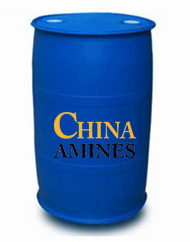1. Chemical Structure and Properties
Molecular Formula: C₆H₅OH
Structural Formula:
A monocyclic aromatic compound with a hydroxyl (-OH) group directly bonded to a benzene ring.
Physical Properties:
Appearance: White crystalline solid with a distinct medicinal odor.
Melting Point: 40–42°C; Boiling Point: 182°C; Density: 1.07 g/cm³.
Solubility: Partially soluble in water (8.3 g/100 mL at 20°C); fully miscible with ethanol, ether, and chloroform.
Chemical Properties:
Acidity: Weak acid (pKa ≈ 10) due to resonance stabilization of the phenoxide ion.
Reactivity:
Undergoes electrophilic substitution (e.g., nitration, sulfonation) at the ortho, meta, and para positions.
Oxidized to benzoquinone under strong conditions; forms esters and ethers via hydroxyl group reactions.
Flammability: Combustible (flash point: 79°C).
2. Industrial Applications
Plastics & Polymers:
Phenolic Resins: Base material for Bakelite® (used in electrical insulators, adhesives, and composites).
Polycarbonates: Intermediate in bisphenol A (BPA) production for transparent plastics.
Pharmaceuticals:
Antiseptics & Disinfectants: Used in throat lozenges and surgical scrubs (now largely replaced by safer alternatives).
Drug Synthesis: Precursor for aspirin (acetylsalicylic acid) and other APIs.
Agrochemicals:
Herbicides & Pesticides: Intermediate in synthesizing 2,4-D and other chlorophenols.
Dyes & Perfumes:
Synthetic Fragrances: Used in phenolic aldehydes (e.g., vanillin derivatives).
3. Safety and Toxicology
Health Hazards:
Acute Exposure:
Skin Contact: Causes severe burns and necrosis (rabbit skin LD₅₀: 630 mg/kg).
Inhalation (≥20 ppm): Respiratory tract irritation, pulmonary edema (TLV-TWA: 5 ppm).
Ingestion: Fatal at doses >1 g/kg; induces CNS depression, liver/kidney failure.
Chronic Effects:
Carcinogenicity: Classified as Group 3 (not classifiable by IARC) but linked to bladder cancer in occupational settings.
Reproductive Toxicity: Animal studies suggest potential developmental risks (EU CLP: H341 suspected).
Protection Measures:
PPE: Chemical-resistant gloves (e.g., neoprene), full-face respirators, and protective clothing.
Storage: Sealed containers in cool, ventilated areas away from oxidizers.
4. Environmental and Regulatory Compliance
Environmental Impact:
Aquatic Toxicity: LC₅₀ (fish, 96h): 5–10 mg/L; highly toxic to aquatic life.
Biodegradability: Slow (OECD 301F: <20% in 28 days); persistent in soil and groundwater.
Bioaccumulation: Moderate (log Kow: 1.5).
Regulatory Frameworks:
EU:
REACH: Listed as a Substance of Very High Concern (SVHC); restricted in consumer products (Annex XVII).
CLP: Classified as Acute Tox. 2 (H330), Skin Corr. 1B (H314).
USA:
EPA: Regulated under Clean Water Act (Priority Pollutant) and CERCLA (Reportable Quantity: 1,000 lbs).
China:
GB 8978-1996: Effluent limits for phenol: 0.5 mg/L.
Waste Management:
Incinerate at >1,000°C with HCl scrubbers; biodegradation via specialized microbial consortia.
5. Case Studies and Application Insights
Case 1: Phenol Contamination in Water (Minamata, Japan, 1970s):
Incident: Industrial discharge of phenol and chlorophenols into Minamata Bay caused widespread poisoning.
Outcome: Strengthened Japan’s Water Pollution Control Law and spurred global regulations on phenol effluents.
Case 2: Green Synthesis of Phenol (Solvay, 2023):
Innovation: Enzymatic oxidation of benzene using engineered Pseudomonas bacteria.
Result: 50% lower energy consumption and zero chlorinated byproducts vs. traditional cumene process.
Comparative Analysis:
PMA vs. Cresols (Methylphenols):
Pros: Higher reactivity for resin synthesis; broader industrial use.
Cons: Cresols are less toxic (oral LD₅₀: ~2,000 mg/kg) and less regulated.
Specifications:
Phenol is a high-purity, colorless crystalline compound with excellent solubility and reactivity, widely used in resins, plastics, pharmaceuticals, and chemical synthesis, available from China Amines Co.


